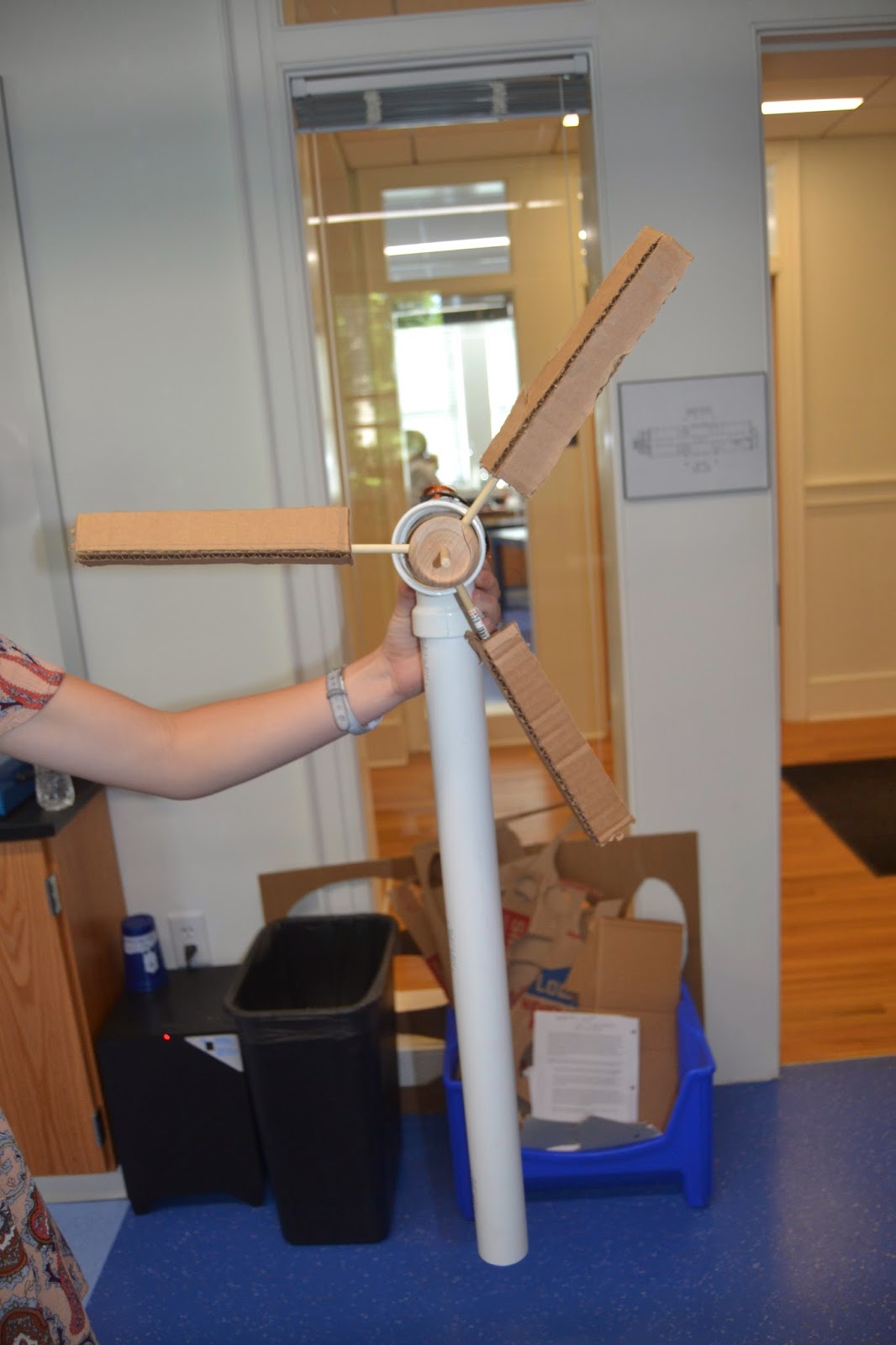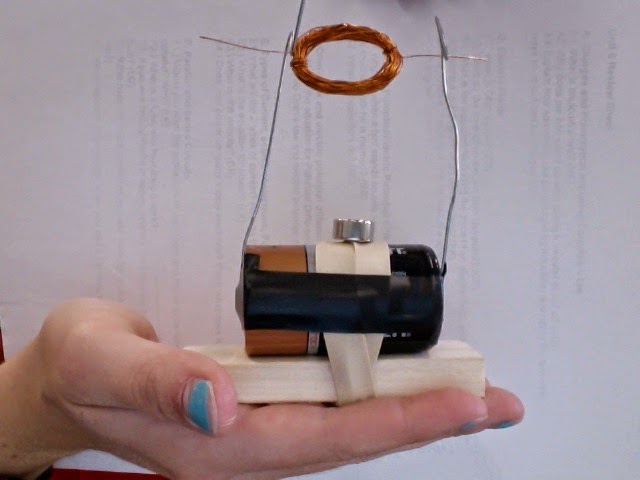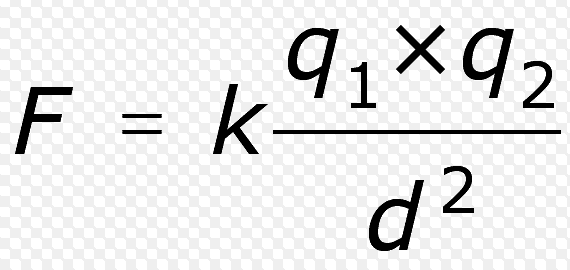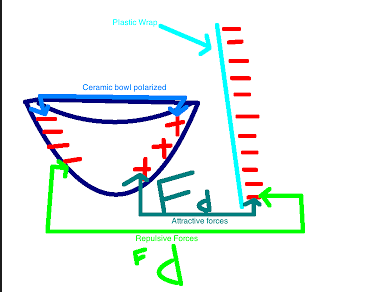One: Payment using a credit card
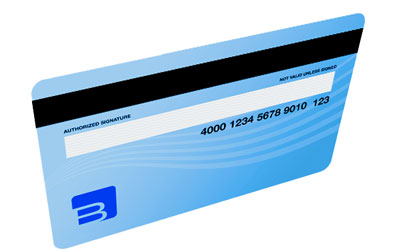
When you gather up all of the stuff you are going to buy, you might have to use a credit card to pay for all of it. But while you're standing there waiting for the cashier to say "you can swipe", think of what is going to happen.
On a credit card, there is magnetic strip that has magnetic sectors. On the black strip on the top of the back of the card, there is a code made up of many different coils going in different directions. The reader has different coils of wire that line up when voltage from the card gets induced into it when the card slides through. The computer will then interpret the code and will take your money.
Two: The shopping carts
When you are pushing around the shopping carts at the store, you start adding more items into the cart and then you suddenly think that because there are so many things in the cart, you are doing so much work. But this is where physics rolls in! You are actually exerting some work. The force, which is the cart, is being pulled down by gravity and it is a combination of force and distance. We know that with work, the force and distance must be parallel...therefore when you push the cart towards that check out section, you are exerting work. The formula for work is work=force*distance. For example, if this picture of the stick figure was you, the way this equation would work out is by solving this problem:
work=20 Joules
But lets say you were only buying a few items and needed to go to the 10 or less items check out and instead used a basket, you would not be doing any work. This is because the force and distance would no longer be parallel, it would be perpendicular. Look to the right, to see why; you are walking forward and the basket is being pulled down by gravity. So even though that basket might seem heavier, you are doing more work pushing that cart.
Three: The parking lot
In the parking lot, you see a lot of physics. When you're walking in or walking out, there is always a car that is trying to pull out and drive into the parking lot. Then there is the annoying car that will wait until you have loaded all of your groceries into the car so that they can steal your spot. As you may know, moving cars have a certain amount of acceleration and are traveling at a certain velocity. If somehow you want to know how fast or the distance a car traveled, you can use these formulas:
- the how fast formula: velocity=(acceleration)(time)
- this formula is basically used for any time the question is asking how fast something went. one must plug in the numbers for the known, and find the unknown.
- how fast describes velocity
- the how far formula:
- distance=1/2(acceleration)(time^2)
- how far describes distance
Here is a picture to show you the equation:
Four: The can explosion
Oh, you clumsy, you. You were trying to reach for your favorite can of canned fruit and on accident you pushed the one next to the one you wanted over. This causes three of the cans to fall off of the top shelf.

- There is no air resistance
- The only force acting on it is gravity
- It is at a constant 10m/s
- It does not matter what the weight of the objects are, gravity is the only thing that matters and like I stated before, it is 10m/s^2
This is how you know that it is due to gravity alone:
But also, if you want to think of all of those cans just sitting on those shelves day after day, you will think of Newton's Third Law which states that with every action, there is an equal and opposite reaction.
For example, take a look at this can sitting on the shelf:

The can is pulling the Earth up, while the Earth pulls the canned soup down.
But if you want to get into logistics with the shelf included, there is
a whole other relationship between either the can and table or the
earth and shelf. In order to figure out the relationships between objects using Newton's third, you must use action-reaction pairs. In order to create action/reaction pairs, there are three rules that must always be followed.
- The verb must always remain the same (pulls/pulls, push/push, hit/hit)
- The direction that was stated first, must be opposite at the end (up/down, left/right)
- The object must stay the same and then switch
When you're at the store shopping for your favorite food, you may not think of all of the electricity that is going into powering that one store alone.
For example:
 The small lights that go above these vegetables to make them presentable. Also, the timers that are put into the mist shooters in order to make them 'fresh'.
The small lights that go above these vegetables to make them presentable. Also, the timers that are put into the mist shooters in order to make them 'fresh'.
 All the lightning that makes the supermarket navigable at day or night.
All the lightning that makes the supermarket navigable at day or night.
 Yo. These refrigerators use up so much energy with the lights that have to be on to show the products and the generators that make the products cold.
Yo. These refrigerators use up so much energy with the lights that have to be on to show the products and the generators that make the products cold.
Electric Power:
Electric power
is the rate in which electric energy is converted into another form. For
example, heat and light because they are different forms of
electricity. Power is measured with direct proportionality between
current and voltage.
The equation for power is: power=I*V
The measurements for this equation: watts=amperes*volts
If you care to know what current and voltage is:
Current:
Current is the flow of electricity that is caused by movement of particles that is measured in amperes (I). There are two types of current: alternating and direct; alternating current is when the current constantly switches directions and direct current is when it doesn't...its that simple!
Voltage:
Voltage is basically the amount of potential energy something has over the number of coulombs it has. Use this equation to figure out voltage: V=pe/q.
Six: Wheels
Let us just say that you're at one of the largest Ingles Supermarkets in the state of North Carolina. You want to know a little bit about your speed while you're there...or at least the speed of the cart when you are pushing it. This lesson about rotational//linear speed will help you with the speed of the wheels.
 Linear speed is the same thing as just saying speed. Speed is the
distance traveled over a unit of time. When you travel a greater
distance it means you are increasing your speed as well. Remember it
like this: greater distance means greater speed. Rotational speed also called angular speed is the calculation of the number of rotations an object does over a unit
of time. When you have a greater RPM, it is faster in speed.
Linear speed is the same thing as just saying speed. Speed is the
distance traveled over a unit of time. When you travel a greater
distance it means you are increasing your speed as well. Remember it
like this: greater distance means greater speed. Rotational speed also called angular speed is the calculation of the number of rotations an object does over a unit
of time. When you have a greater RPM, it is faster in speed.The carts at the supermarkets almost always have four small wheels because four will keep the cart the most stable and if you've noticed the wheels are usually really small. Why wouldn't you use big wheels? The effect of using big wheels means that it will go a greater distance but slower, but if smaller wheels are used, the cart will travel faster but a shorter distance and this is ideal because you are rushing to get to the different aisles but you are not traveling a long distance because you are constantly stopping to pick something up.
Seven: Your mom is mad
 So your mom is ready to leave the store with the groceries that she intended to buy but then she realizes that she forgot something. She is too lazy to go get it and the cashier is waiting for her to finish the transaction. She makes you sprint to go get it and along the way you pick up your favorite snack too. But if you don't hurry up she is going to be mad.
So your mom is ready to leave the store with the groceries that she intended to buy but then she realizes that she forgot something. She is too lazy to go get it and the cashier is waiting for her to finish the transaction. She makes you sprint to go get it and along the way you pick up your favorite snack too. But if you don't hurry up she is going to be mad.So you decided to sprint. Running has a lot of physics involved as well. All runners bend their legs when they run because they are moving their legs closer to their axis of rotation which is their hips. This is a property of the lesson on rotational inertia. Rotational inertia depends on the distribution of mass and also the property of an object to resist changes in the spin. If there is more rotational inertia it is harder to spin, if there is less, it is easier to spin. Therefore, runners bring their mass closer to the axis of rotation to lower their rotational inertia. The farther away from the axis of rotation, the higher rotational inertia an object has. So next time your mom is rushing you to go get something she forgot to pick up on her list, you will know how to run faster.
Eight: Leaving Ingles and what do you see?
When you're leaving Ingles you walk out of the sliding door and see the big delivery truck pulling up to the store. The man who is doing all of the work is struggling to get all of the products out of the truck because he is simply just grabbing the products and carrying them off of the truck. You, being a physics expert, help him up by asking him if he has a ramp...

A ramp is a machine. To be more specific, it is a simple machine. A machine is used to multiply force or just to make your job completing a task a little bit easier. Machines reduce or change force but your energy and work will always remain the same. There is a concept called the principle of machines which we learned is related to the conservation of
energy. When work is put in there is an equal amount of work out.
work in=work out
Force in times distance in =
force out times distance out
For example, in the image above, if the man didn't use the ramp, it would take much more force to load the box with a shorter distance than it if you just added a ramp.
For example, in the image above, if the man didn't use the ramp, it would take much more force to load the box with a shorter distance than it if you just added a ramp.
the work put in when you use the ramp is= fd
work out when not using the ramp= fd
But at the end, the work in still ends up equaling the work out, just that the two factors in the equation are increased or decreased.
Nine: A box sliding down that ramp
| Created on Paint |
First, we learned about vectors which are arrows that show magnitude and direction.
In order to create the middle arrow that will show you in which
direction the object will go, you must draw a parallelogram like the one on the right hand side.
The purple arrow represents the direction that the object will end up going in.
But really, why does a box actually slide down a ramp?
Okay, well first here are all of the forces that are acting on the box.
- Support force: a force that is always perpendicular to the surface
- Fweight/gravity which is pulling box down onto ramp
- It has a fnet which is sliding the box down the ramp
Ten: Pulling the full basket//Net force
Net force is essential when looking at whether objects are in motion or at rest. First, we had to learn what force was. Force is a push or a pull that is measured in Newtons. A Newton is basically a quarter of a pound. After learning what a force was, I learned that a net force was the overall force on an object when all forces are added together. .
Net force is essential when looking at whether objects are in motion or at rest. First, we had to learn what force was. Force is a push or a pull that is measured in Newtons. A Newton is basically a quarter of a pound. After learning what a force was, I learned that a net force was the overall force on an object when all forces are added together. .
When the shopping cart is full of all the food and other necessities that you purchased, you may need the help of a parent or sibling to push the cart. Look at this experience in the physics aspect. For example, if you are on one side (ie: the left) pushing the cart
with 400N and your parent or sibling is pushing on the right side 300N as
well in the same
direction, you would need to add these two forces together, because they
are going in the same direction, and you would get a net force of 700N. (Pretend the box is the shopping cart..imagination people).





